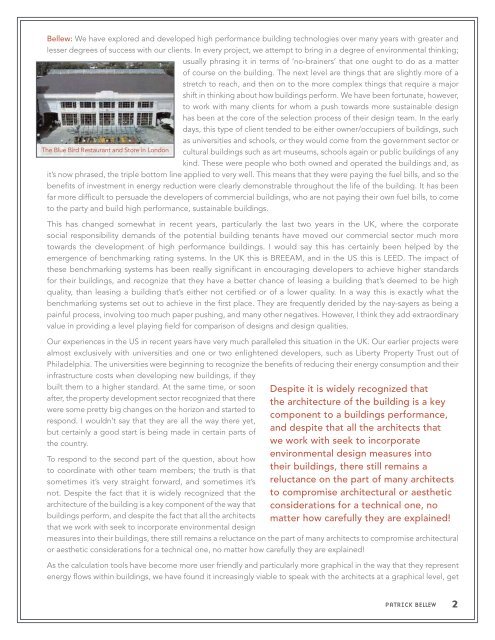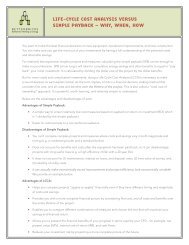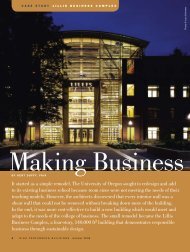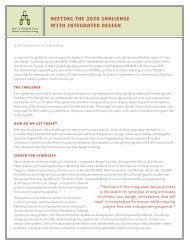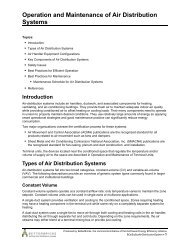An IntervIew wIth PAtrIck Bellew, AtelIer ten - BetterBricks
An IntervIew wIth PAtrIck Bellew, AtelIer ten - BetterBricks
An IntervIew wIth PAtrIck Bellew, AtelIer ten - BetterBricks
You also want an ePaper? Increase the reach of your titles
YUMPU automatically turns print PDFs into web optimized ePapers that Google loves.
<strong>Bellew</strong>: We have explored and developed high performance building technologies over many years with greater and<br />
lesser degrees of success with our clients. In every project, we attempt to bring in a degree of environmental thinking;<br />
usually phrasing it in terms of ‘no-brainers’ that one ought to do as a matter<br />
of course on the building. The next level are things that are slightly more of a<br />
stretch to reach, and then on to the more complex things that require a major<br />
shift in thinking about how buildings perform. We have been fortunate, however,<br />
to work with many clients for whom a push towards more sustainable design<br />
has been at the core of the selection process of their design team. In the early<br />
days, this type of client <strong>ten</strong>ded to be either owner/occupiers of buildings, such<br />
as universities and schools, or they would come from the government sector or<br />
The Blue Bird Restaurant and Store in London<br />
cultural buildings such as art museums, schools again or public buildings of any<br />
kind. These were people who both owned and operated the buildings and, as<br />
it’s now phrased, the triple bottom line applied to very well. This means that they were paying the fuel bills, and so the<br />
benefits of investment in energy reduction were clearly demonstrable throughout the life of the building. It has been<br />
far more difficult to persuade the developers of commercial buildings, who are not paying their own fuel bills, to come<br />
to the party and build high performance, sustainable buildings.<br />
This has changed somewhat in recent years, particularly the last two years in the UK, where the corporate<br />
social responsibility demands of the po<strong>ten</strong>tial building <strong>ten</strong>ants have moved our commercial sector much more<br />
towards the development of high performance buildings. I would say this has certainly been helped by the<br />
emergence of benchmarking rating systems. In the UK this is BREEAM, and in the US this is LEED. The impact of<br />
these benchmarking systems has been really significant in encouraging developers to achieve higher standards<br />
for their buildings, and recognize that they have a better chance of leasing a building that’s deemed to be high<br />
quality, than leasing a building that’s either not certified or of a lower quality. In a way this is exactly what the<br />
benchmarking systems set out to achieve in the first place. They are frequently derided by the nay-sayers as being a<br />
painful process, involving too much paper pushing, and many other negatives. However, I think they add extraordinary<br />
value in providing a level playing field for comparison of designs and design qualities.<br />
Our experiences in the US in recent years have very much paralleled this situation in the UK. Our earlier projects were<br />
almost exclusively with universities and one or two enligh<strong>ten</strong>ed developers, such as Liberty Property Trust out of<br />
Philadelphia. The universities were beginning to recognize the benefits of reducing their energy consumption and their<br />
infrastructure costs when developing new buildings, if they<br />
built them to a higher standard. At the same time, or soon<br />
after, the property development sector recognized that there<br />
were some pretty big changes on the horizon and started to<br />
respond. I wouldn’t say that they are all the way there yet,<br />
but certainly a good start is being made in certain parts of<br />
the country.<br />
To respond to the second part of the question, about how<br />
to coordinate with other team members; the truth is that<br />
sometimes it’s very straight forward, and sometimes it’s<br />
not. Despite the fact that it is widely recognized that the<br />
architecture of the building is a key component of the way that<br />
buildings perform, and despite the fact that all the architects<br />
that we work with seek to incorporate environmental design<br />
Despite it is widely recognized that<br />
the architecture of the building is a key<br />
component to a buildings performance,<br />
and despite that all the architects that<br />
we work with seek to incorporate<br />
environmental design measures into<br />
their buildings, there still remains a<br />
reluctance on the part of many architects<br />
to compromise architectural or aesthetic<br />
considerations for a technical one, no<br />
matter how carefully they are explained!<br />
measures into their buildings, there still remains a reluctance on the part of many architects to compromise architectural<br />
or aesthetic considerations for a technical one, no matter how carefully they are explained!<br />
As the calculation tools have become more user friendly and particularly more graphical in the way that they represent<br />
energy flows within buildings, we have found it increasingly viable to speak with the architects at a graphical level, get<br />
Patrick <strong>Bellew</strong><br />
2


